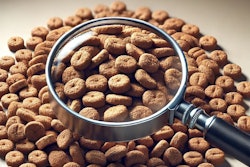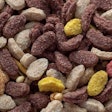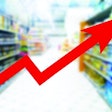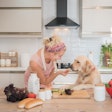
“What’s the vision for your product?” That’s the first question to ask when developing a new pet food or treat, especially in the premium space, according to Will Henry, process group director for Extru-Tech. During an Ask the Pet Food Pro Zoom chat on September 23, 2025, he described a line of queries to undertake at the beginning of the new product development process.
That question may seem basic, but it’s necessary to properly define your product before you invest time and resources into the development process. Other essential questions to ask, Henry advised, include:
- What will be your product’s differentiator in the marketplace?
- Is there a place in the market for it?
- What do you want your product to say; how are you going to market it?
Setting expectations for costs and timelines is key
Once you know the foundational information for the proposed new product, then you can drill down, Henry said. “Are you targeting low-carb, grain-free, high meat … premium or super-premium? Is it going to be functional? And then how does it relate in terms of sustainability as well?”
Yet, as vital as nailing down the product charter is, of equal importance is setting expectations for costs and timelines. “That’s the second thing I try to do, always, is to set expectations. Both in terms of the expected life cycle of this journey, but also in terms of ingredient costs and logistics,” Henry explained. “Those are things that most groups, especially startups, they don’t understand that you can’t just make the product in a week and then have it on the shelf the next week. There are too many juggling balls in the air to get it done in that short of time.”
A full accounting of the costs should happen early on, “usually within the first month of the new product development, before we even mix ingredients and make a test batch,” Henry said. That’s important for obtaining approval for the project, then staying on track throughout the process to avoid wasting time and other resources. “It's no different than laying out a project for a new facility or planning an upgrade. You get all your costs up front first to get approval, here’s going to be my total output,” he added. “Does it still make capital sense to do this project?”
Do you need a co-manufacturer, and which is best for your product?
Another factor in setting expectations lies with the desired product format — kibble, wet, freeze-dried, fresh, minimally processed, etc. — and where and who will process the product. “We also keep that in mind, early on, because we have to know from the beginning, can we take this to an actual production plant?” Henry said. “First of all, if they’ve got their own equipment, is it going to fit their current structures and concepts? Or we’ve got to design it so it fits into a co-manufacturer’s current architecture. So, those are good to know early on, so you can start building those relationships. We already have those, but the client needs to build that relationship.
“We look at it from many aspects, not just in terms of the architecture, but also the personality and culture of our client, and understanding where they best fit in,” Henry continued, explaining how to find the right co-manufacturer. “We look at it from aspects of ingredient availability. And, their performance, but also their quality structure, you know, are you BRC, are you SQF, and how that fits into the vision of the end product.” (BRC and SQF are common quality standards that often come into play if a company wants to export its pet food or treat.)
“I have to target those ‘co-mans’ that fit that mold. And what we always start out with, again, with the expectations, the more complex your product, the narrower the pool you get to choose from for co-manufacturing. Typically, the higher your cost of production will be as well,” he added.
Back to the expectations and timeline, always
What can’t get lost among all the moving parts of a new product development process: settling on an ingredient deck, then ensuring the company can source the ingredients at the appropriate scale and frequency. That’s especially key during times like now of supply chain volatility.
“That is part of these expectations. We always come back to that,” Henry said. “Once we have that ingredient deck, we double-check that feasibility as well. And again, that’s got to be paired not just with, can we source it, what are the logistics, but how about the co-manufacturer? Does he have any rules against using that product, regardless of where it’s from?
“So it all keeps circling back to the same setup, is once you get an answer on step 18, you still go back and double-check it with your expectations and feasibility,” he added, “on every single change along the way.” Significant changes add to the overall development timeline. “What slows us down the most … is that anytime we get requested to make changes, we have to go back and double-check all the previous steps that one change is going to affect.”
Bottom line: “Stick to the timeline, stick to the steps,” Henry emphasized. That includes the packaging. “The biggest pitfall or mistake that we see made by our clients is, let’s design the bag first. Or let’s design the bag too early in the process before we’ve got something that we can put in the bag. The biggest challenge there, especially with kibble, is bag fill, headspace. Understanding the role that density plays in texture, texture, cook and palatability,” and how that affects how the product fills the bag to ensure that durability and integrity are maintained.
If the bag has already been designed, or even printed, problems can arise. “That really will force them to go back and waste money, or force us to make changes to the product that doesn’t fit in the original product charter that we developed,” Henry explained.


















